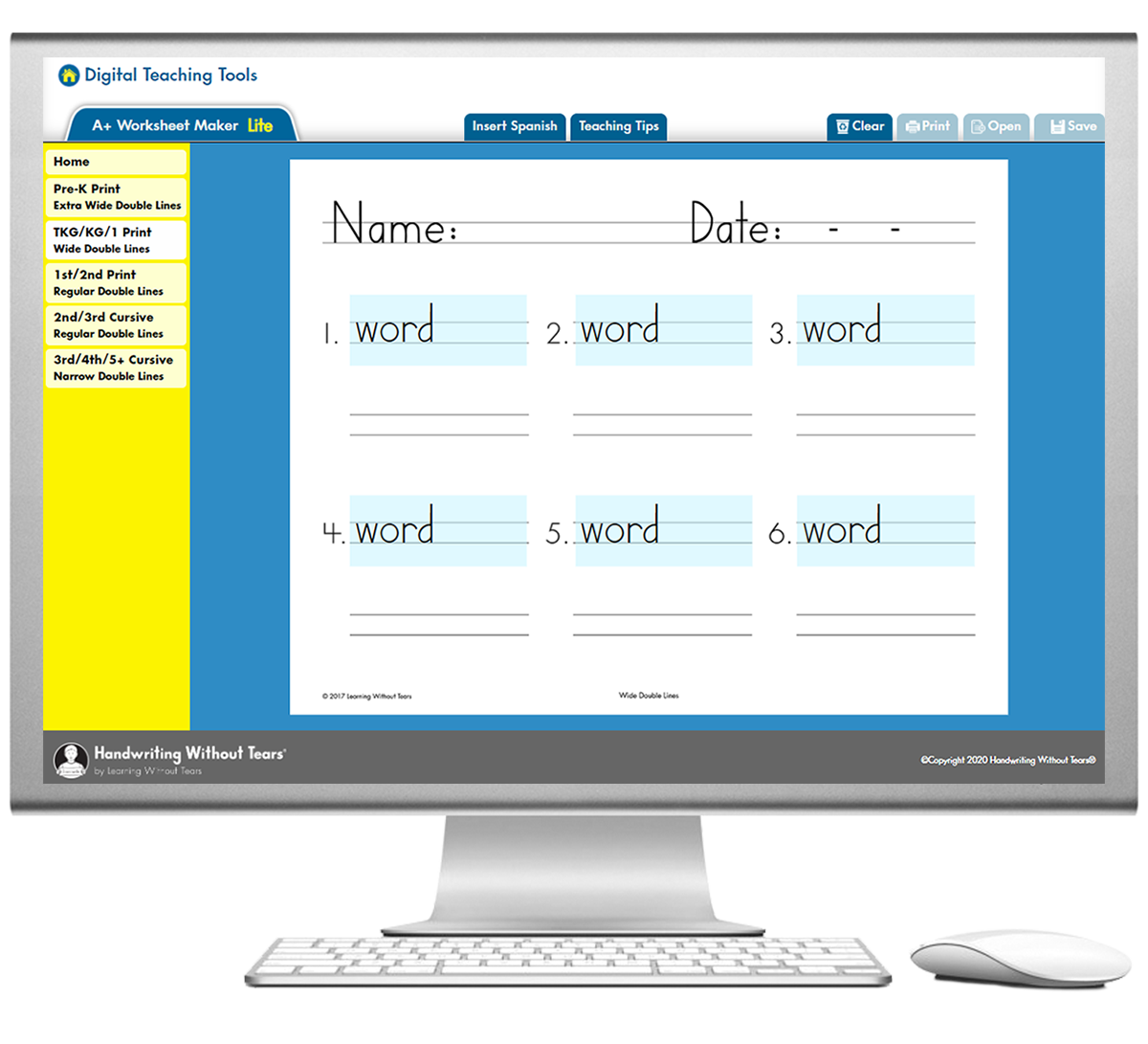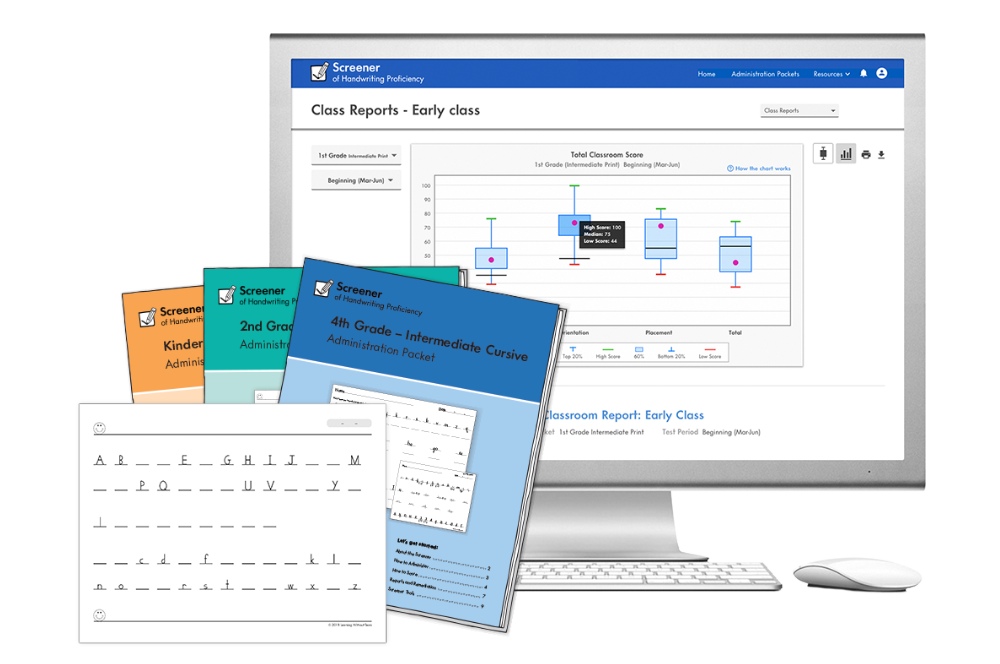How to Teach Sentence Writing & Structure for Kids
So, your student can write letters and is developing early literacy skills to read high-frequency words and sound out some new words. What comes next? Sentence writing, of course!
How exciting it is when children move from being able to express their ideas only by drawing pictures to writing sentences that everyone can read! Before we can help children learn to write a sentence, we first need to teach them what a sentence is! Then we need effective teaching strategies and good materials to make teaching and learning sentences fun.
What is a Sentence?
A sentence:
- is a group of words that expresses a complete thought that can stand alone (also called an independent clause)
- starts with a capital letter
- has spaces between each word
- ends with punctuation (period, question mark, or exclamation point)
- contains a subject (someone or something) and a predicate (what the someone or something is being or doing)
There are three main types of sentence structures:
- Simple Sentence: One independent clause with a subject and a predicate
- Ex: The dog wags her tail.
- Compound Sentence: Two or more independent clauses joined together by a coordinating conjunction (i.e., and, but, for, or, nor, yet, so)
- Ex: I open the door, and the dog wags her tail.
- Complex Sentence: Contains at least one independent clause and one dependent clause
A dependent clause is a group of words with a subject and verb that expresses a complete thought, so it cannot stand alone (e.g., “when I get home”).- Ex: The dog wags her tail when I get home
How to Teach Sentence Structure
Want your students to have success with writing sentences? The formula is simple!
Active Teaching + Good Materials = Writing Success.
Let’s first look at Active Teaching.
Three Instructional Stages for Teaching Successfully
There is an important, three-step process that sets children up for success when learning. This process can not only be used when teaching sentence structure but also for handwriting instruction and so many other skills!
- The first stage is Direct Instruction. During this stage, you directly instruct by actively demonstrating how to write a sentence. To get all eyes on you as you demonstrate, say, “My Turn! Watch me write the sentence.” Explain the important concepts as you write such as capitalization, spacing, and punctuation. Then say, “Your Turn,” indicating it’s their turn to imitate you in their workbook, worksheet, or lined paper. This step assures students are watching and learning how to write correctly, which is a foundation piece for good habits.
- The next stage is Guided Practice. This requires that teachers guide students to their workbook or worksheet where they copy sentences from a model. While students write, teachers should walk around and closely monitor and guide their students. Resist the temptation to let workbook and worksheet practice be independent work as they can copy incorrectly and reinforce bad habits. Students need direct instruction prior to and continued guidance during this stage so they practice correctly.
- The final stage is Independent Practice. This happens when children write sentences on their own without a visual model, and it is an important part of your lesson to help students develop independence with writing sentences. Provide lined paper or journals for this stage.
Make Teaching Sentences Fun!
Research tells us that multisensory teaching is the best way to teach children so that we appeal to each child’s learning style. It’s also part of active teaching! Add one or more of these multisensory ideas to your sentence structure lessons to get children excited and engaged in the lesson!
Sentence School
Sentence School is a kindergarten level program offered from Learning Without Tears designed to reinforce good handwriting habits as you teach students to form sentences and become confident writers. It works alongside any language arts program and takes only 10-15 minutes per day. Daily lessons in the included teacher's guide promote vocabulary and sentence skills with word cards and common classroom objects. Each lesson plan includes an active, hands-on activity to help children learn the words and formulate sentences with what they see and experience in the activity.
Mixed-Up Sentences
Write the subject on one popsicle stick and the predicate on another for several sentences. Talk with your students about the two parts of a sentence and then let them mix them up to make silly mixed-up sentences!
Sentence Song
The Sentence Song is on the Rock, Rap, Tap, and Learn Music album from LWT. It is sung to the tune of "Yankee Doodle" and helps children learn about capitalization, spacing between words, and punctuation in a fun way!
Spacing Strategies
One of the challenges children face when starting to write sentences is spacing! We don’t use spaces when we speak, so the concept of spacing isn’t natural for children. There are many creative ways to help children learn to space their words. Here are a few:
- Nothing Bottle: What is a space? It’s “nothing,” right? Take a large, empty plastic bottle or pitcher, and write the word “nothing” across it. Before writing time, ask students to hold out their hands and pour some “nothing” into them. Instruct them to use a little “nothing” after every word as they write!
- Sick Sentence Clinic: Write a sentence on the board or with the A+ Worksheet Maker without any spaces between the words. Discuss with students why that sentence is difficult to read and explain that it is a “sick sentence”. Tell them they are going to be “sentence doctors” and make that sentence healthy again! Give them lined paper to re-write the sentence with good spacing.
- Spaghetti and Meatballs: Explain that there should be no more than a spaghetti-sized space between letters inside words, and we need a meatball-sized space between words! Give students a large cotton ball and a piece of string to use as their “spaghetti and meatball” to measure spaces as they write.
What Else Do You Need to Help Children Write Sentences Effectively?
You need Good Materials! Teachers need good materials to demonstrate sentences and students need well-designed materials to practice on. The products below will promote success for you as a teacher and for your students as they are developing their writing skills.
For Teachers
- Worksheet Maker Lite: This free and easy-to-use resource lets you create worksheets for students using the LWT double lines. There are worksheet templates for grades K-4 in both print and cursive with grade-appropriate lines and spacing. Templates include spelling, vocabulary, sentence writing, and graphic organizers.
- Double Line Writer: To help with demonstrating sentences on your board, insert two markers in the holes of this handy tool to easily draw straight double lines on chalkboards or dry erase boards.
- Double Line Sentence Strips: These 24”x3” strips are great for modeling sentences and come in a pack of 100. You might want to keep one on your bulletin board with a sample sentence as an example for students to reference!
- Double Line Chart Tablet: These 24”x32” tablets can be used with your easel to demonstrate sentences for students.

For Students
- Grade Level Handwriting Workbook: Handwriting Without Tears workbooks teach letters and numbers and include page after page of writing activities to practice sentence writing and handwriting skills.
- Building Writers: This program includes grade-level workbooks for grades K-5 for children to practice and build core writing skills. It offers a scaffolded approach to develop proficiency with writing narrative, information, and opinion pieces.
- Double Line Paper: Children need extra paper for writing practice. Double Line Notebook Paper comes in packs of 100 or 500 sheets in wide, regular, or narrow width.
- Curious about double lines and why they work? Double lines control children’s letter size, spacing, and placement, which promotes legible writing that is easily transferred to other styles of paper. Watch this video to learn more:
- Big Sheet Draw & Write Paper: These 11”x17” sheets are perfect for students to have space for drawing and writing sentences about their drawing! They come in a pack of 100 double-sided sheets.
- Writing Journal: The LWT grade-level journals provide grade-appropriate double lines for students to use during independent writing time.
- Keyboarding Without Tears: Sentence writing doesn’t just happen on paper! Now more than ever it is crucial that elementary students practice composing sentences and paragraphs in digital form. The KWT curriculum includes fun, grade-appropriate lessons for children to develop automatic keyboarding skills.
Assessment
Don’t forget about assessment! We need a way to assess children’s writing skills and track progress. The LWT Screener of Handwriting Proficiency is a free, easy-to-administer, whole class assessment that helps educators and specialists assess critical and measurable skills that children need for success including the sentence components of capitalization, spacing, and punctuation.

Sentence Writing is Fun with Learning Without Tears!
With these teaching tips and good materials, you can help children achieve sentence writing success! Don’t forget that handwriting is a foundational skill that should be taught prior to and alongside sentence structure! For more information about the products mentioned above and more ways to support children learning handwriting skills, explore LWTears.com.